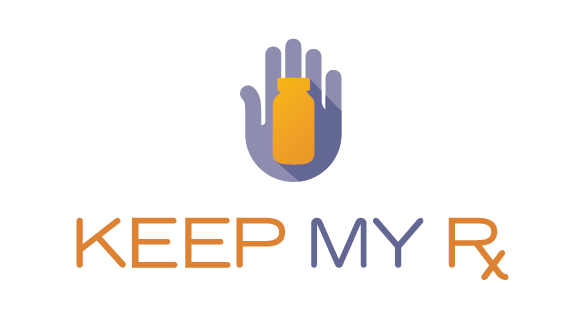To maximize their profits, health insurers have been not only raising premiums but also intensifying efforts to contain their costs – restricting formularies, embracing utilization management practices and imposing benefit designs that shift the expense of medicines to patients. This approach impacts patients with chronic and complex illnesses, who depend upon advanced medical therapies to stabilize their condition and maintain normal lives. For many of these patients, finding the right therapy took a painstaking process of trial and error, which dragged on for months or even years. Their medical stability is hard won. Yet insurers may opt to sacrifice these patients’ stability by imposing non-medical switching, compelling them to abandon the effective therapy for a less costly alternative—for reasons unrelated to the patients’ well-being.
These types of switches come in a variety of forms. For example, some health plans price patients out of their chosen medication by placing the therapies on specialty tiers that require burdensome cost-sharing. Other plans may simply eliminate coverage for certain medications. Non-medical switching not only ignores the process physicians and patients underwent to find a successful medical therapy, but it also disregards the impact of switching medications arbitrarily. When patients lose access to the therapy that stabilizes their condition, they may also lose the ability to manage their disease, facing re-emerging symptoms and new side effects. Patients may require visits to the emergency room, additional appointments with their physician, lab tests and hospitalizations as a result—making the “less costly” alternative an expensive option for patients and insurers alike.
With conditions for which few viable treatments exist, eliminating options can leave patients with dangerously limited alternatives. Restricting non-medical switching can protect not only patient health but also the physician-patient relationship’s role in guiding patient care.
Learn More:
Podcast
- Sad, Sick and Switched, Patient Access Podcast, April 2019
Infographics
- How Non-Medical Switching Hurts Patients, Alliance for Patient Access, February 2019
- Non-Medical Switching of Neurotoxins, Alliance for Patient Access, October 2018
- The Price of Non-Medical Switching, KeepMyRx, January 2018
- How Lawmakers can Protect People with Chronic Diseases, KeepMyRx, January 2018
- The Effect of Non-Medical Switching on Patients with Mental Illness, KeepMyRx, January 2018
- A Tale of Two Rx Barriers, KeepMyRx, April 2017
- A Non-Medical Switching Story: Diabetes, KeepMyRx, March 2017
- Protecting Patients from Non-Medical Switching, KeepMyRx, February 2017
- Non-Medical Switching: Cutting Costs at the Expense of Patient Health, Alliance for Patient Access and Prescription Process, May 2016
- Common Barriers to Treatment: Step Therapy, Non-Medical Switching & Pharmacist Substitution, Alliance for Patient Access and Prescription Process, April 2016
Videos
- COVID-19 Policy & Patient Access, Keep My Rx, November 2020
- Barriers to Patient Access: Non-Medical Switching, Patient Access Collaborative, June 2020
- Non-Medical Switching Hurts Patients, Alliance for Patient Access, March 2019
- Non-Medical Switching of Neurotoxins, Alliance for Patient Access & Movement Disorders Policy Coalition, February 2019
- Diabetes Patients’ New Challenge, Diabetes Policy Collaborative, September 2018
- Protecting Patients from Non-Medical Switching, KeepMyRx, March 2017
- Understanding Non-Medical Switching, Alliance for Patient Access, February 2016
Policy Briefs
- One-Pager: Advocacy Insights: Non-Medical Switching, Patient Access Collaborative , May 2021
- Position Statement: Non-Medical Switching, Alliance for Patient Access, July 2019
- Study: A Study of the Qualitative Impact of Non-Medical Switching | Abstract, Alliance for Patient Access, February 2019
- Health Care Analytics Brief: Cost-Motivated Treatment Changes & Non-Medical Switching Commercial Health Plans Analysis, Institute for Patient Access, August 2017
- Health Care Analytics Brief: Cost-Motivated Treatment Changes: Implications for Non-Medical Switching, Institute for Patient Access, October 2016
Other Resources
- Blog: CVS Caremark “Switch” Puts Heart Patients at Risk, January 20, 2022
- Blog: Time to End Insurer-Driven Rx Switches, February 10, 2021
- Blog: More Data, More Non-Medical Switching for Patients in Maine, Institute for Patient Access, February 18, 2020
- Blog: New Data Quantify Prevalence, Cost of Non-Medical Switching, Institute for Patient Access, August 8, 2019
- Blog: Study: Non-Medical Switching Reduces Quality of Life for Patients, Institute for Patient Access, February 21, 2019
- Blog: Poll: Voters Want Policy That Limits Non-Medical Switching, Institute for Patient Access, September 25, 2018
- Blog: Illinois Joins Maine in Limiting Non-Medical Switching, Institute for Patient Access, September 4, 2018
- Blog: Maine Delivers Patient Victory on Non-Medical Switching, Institute for Patient Access, July 2018
- Poll: One-Third of Iowans Affected by Non-Medical Switching, September 2017
- Frequently Asked Questions: Understanding Non-Medical Switching Legislation, KeepMyRx, July 2017
- Fact Sheet: Protecting Patients from Non-Medical Switching, KeepMyRx, February 2017
- Blog: Fewer Treatment Choices and Higher Costs Plague Diabetes Patients, Institute for Patient Access, February 2017
- Model Legislation, Aimed Alliance, 2017
- Survey: Tennessee Patient Sentiment toward Non-Medical Prescription Drug Switching by Health Insurance Companies, Tennessee Patient Stability Coalition, 2016
- “Keeping Stable Patients on Their Medications,” Coalition of State Rheumatology Organizations
